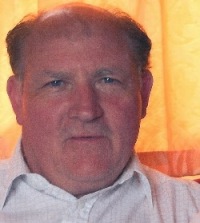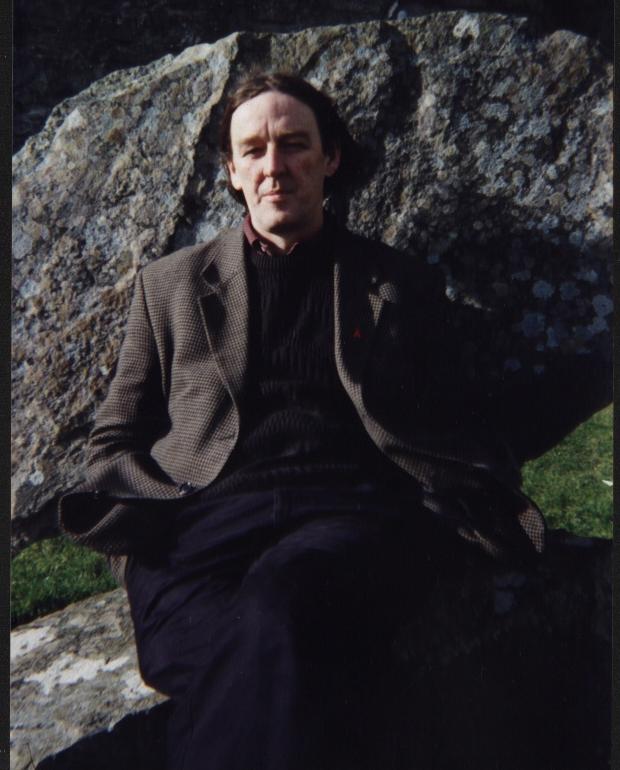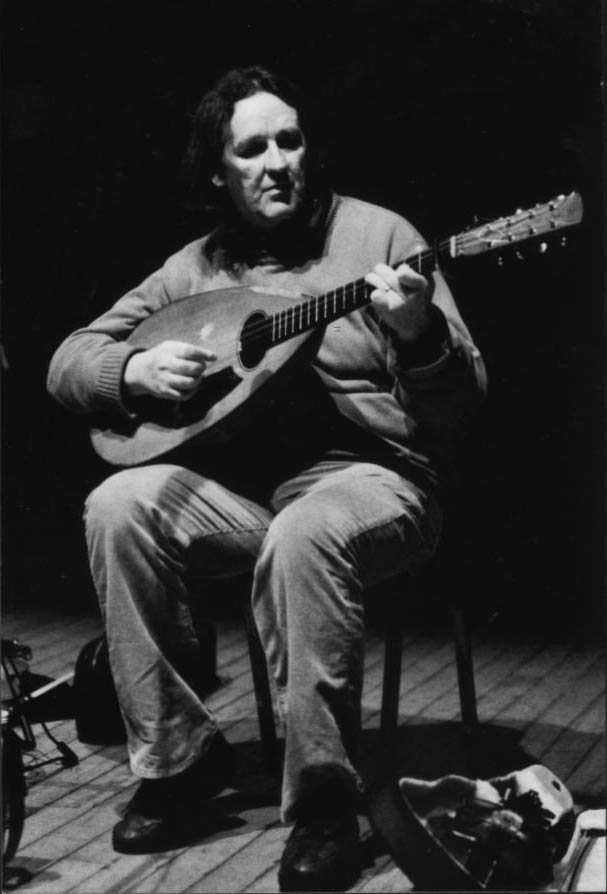|
|
It has been said of John Hoban that he could "…..make music out of a sheaf of oats." On the title track "Castlebar Station" he plays fiddle, cello, mandolin and mandocello. This tune was written in an Ukranian Hall in Canada. And what you may well ask was the inspiration? Well, the Hobans had a shop in Castleber and stock was brought in, by rail, from Dublin "and other far-flung places". As a child, John would accompany his father to the station and his precocious mind was fascinated by the signal-box. Did this early exposure to the comings and goings of people lead to John’s acute drapetomania? (I always wanted to use that word; it means an intense desire to run away from home.) Perhaps when he sat down to compose the tune in a foreign land, decades later, the multiple definition of "station" also fired his imagination; our station in life, the house Station of his childhood. He wrote the tune in the Klezimar Music style. Was this Jewish connection brought about by the imagery of Railway Stations in the likes of "Shindler’s list"? On track 4 "Healing Business," one of his recitations, he accompanies himself on the African lute harp while his wife Isabela plays the Tibetan prayer bowl and the free-range egg…….. Don’t ask…………I didn’t. The subject of "Healing Business" is a man who has abandoned Fás courses and went on the "New-age pension" to become a mystic. This Guru has a picture of himself, as a youngster, on the wall among portraits of Leonardo de Vinci The Dalai Lama and Nickey Rackard. And he sells; "…..Ireland’s own, Old Moore’s Almanic gán doubt,He also gives lectures on turf cutting and shows slides on making hay. (The Guru, that is, not John Hoban) Many of John’s songs were spontaneous compositions. "Ciarog" was written on a plane, in the 90’s, going to California. "Westport Song" was written in Freemantle. "A Day in Sligo" was, believe it or not, written in Sligo. He took his time at "Willie Joe"; starting it in Turkey in 1989 and finishing it in Castlebar in 2004. "Kandahar to Castlebar" and "Night Train" are poems which he put to music. The most obvious thing about Troubadour Hoban is the lack of the shackles of convention. One reviewer from Connecticut had this to say; "Mr. Hoban doesn’t pay much heed to musical boundaries. He has featured on albums with singer-songwriters Jackson Browne and John Prine, as well as master traditional artists such as accordionist Sharon Shannon and the Chieftan’s fluter Matt Molloy." In his compositions he has a Wildean knack of standing traditional mores on their head and inverting established clichés. The marginalized are his heroes and the time-worn and oft repeated line from the Walton Programme has become," The Songs our Fathers didn’t like". The late Bryan McMahon once said that a teacher leaves the track of his teeth on three generations. John Hoban has left the mark of his musical molars on more than three continents. And the influence of his teaching will be felt in music circles around the world by generations not yet born. The last time I spoke to him I was kinda disappointed to learn that he hasn’t played or taught at either the North Pole or the South Pole. But don’t be too surprised if, sometime in the future, you hear a Polar bear giving a reasonable rendition of "The West’s awake" or a Penguin strumming an oddly shaped instrument. He recognises his talent and acknowledges its source, "I have, by the Grace of God, been given a gift to teach" he told an interviewer, "I’m not sure of the word except the use as in to educate, educo = to lead out- all people, in many different places, all instruments, including dance, songwriting, performing….etc." Should I feel a little uncomfortable with my inability to sing when he says, "….once the ego is removed, even temporarily, there is an abundance of music in us all"? Many Hoban compositions include one or more hydrological references: "Rain on the Reek", "Clew Bay", "Throwing up in the Lake". He wrote "Sruthan"(which means an underground stream) in memory of the street where his mother was born in 1921. And what do diviners use to locate underground springs? Under cross-examination he admits to being an Aquarian (the water-carrier) but does the water motif extend to John Hoban’s possible belief in re-incarnation ?: But maybe next time , Le Cúnamh Dé!
John Hoban, |





